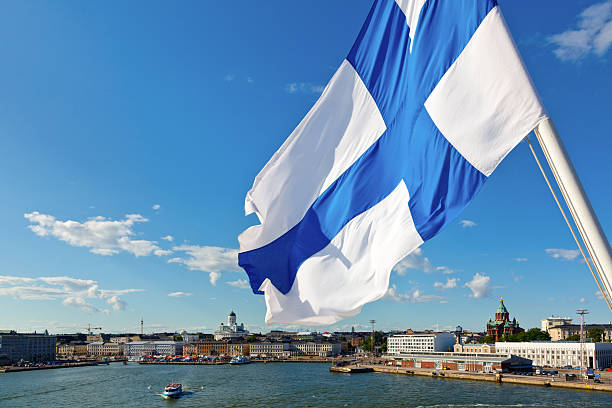The Fascinating Culture and Lifestyle of Finland's People
Finland, a Nordic country located in Northern Europe, is known for its striking natural beauty, high standard of living, and strong social systems. However, it is also a country with a deep and rich cultural history, and its people embody the values of resilience, self-sufficiency, and a strong connection to nature. The Finnish people have developed a unique lifestyle that reflects their environment, history, and progressive outlook on life. In this article, we will explore the traits, traditions, and values of the Finnish people, highlighting what makes them so interesting and admirable.
Table of Contents
- The National Character of the Finnish People
- The Role of Nature in Finnish Life
- Finnish Education System: A Model for the World
- Finnish Sauna: A Cornerstone of Finnish Culture
- Finnish Food: A Taste of the North
- Finnish Language: A Window into Finnish Culture
- Finnish Traditions and Celebrations
- The Finnish Love for Technology and Innovation
- Social Equality and Finland’s Progressive Society
- Finnish Sense of Humor: Dry and Subtle
- Finnish Sports and Outdoor Activities
- The Finnish Approach to Mental Health
- The Finnish Work-Life Balance
- Finland's Approach to Sustainability and the Environment
- Finnish Architecture: Modern and Minimalist
- Famous Finns and Their Contributions to the World
- Finnish Music and Arts: A Rich Creative Culture
- Life in Finland: Challenges and Rewards
- The Influence of Finnish People on Global Culture
- Why Finland is Consistently Rated as One of the Happiest Countries in the World
The National Character of the Finnish People
The Finnish people are often described as reserved, practical, and down-to-earth. This national character is shaped by the country’s long history of surviving in harsh conditions, including long winters and relatively isolated geography. Finns tend to value personal space and privacy, which is reflected in both their social interactions and living spaces.
While they may appear distant or introverted at first, they are known for being incredibly loyal and sincere once trust has been established. In Finnish society, actions often speak louder than words, and there is a strong emphasis on integrity and honesty. This cultural trait is known as “sisu,” a term that roughly translates to determination, resilience, and the ability to push through adversity despite difficult circumstances.
The Role of Nature in Finnish Life
Finland’s natural landscape plays a crucial role in shaping the identity of the Finnish people. With over 188,000 lakes, vast forests, and the stunning Northern Lights, nature is more than just a backdrop; it is woven into the everyday life of the Finnish people.
For Finns, spending time outdoors is essential to well-being. Whether it’s walking in the forest, fishing on a serene lake, or enjoying the summer sun in one of Finland’s many national parks, nature is a place for relaxation, recreation, and even spirituality. The Finnish concept of “jokamiehenoikeus” (Everyman’s Right) allows people to roam freely in nature, whether on public or private land, for activities like hiking or berry picking.
This connection to nature is also reflected in Finnish design and architecture, where natural materials like wood, stone, and glass are commonly used to create spaces that harmonize with the environment.
Finnish Education System: A Model for the World
Finland's education system is widely regarded as one of the best in the world, and for good reason. Finnish people place a strong emphasis on education, seeing it not only as a means of personal development but also as a cornerstone of societal success.
From a young age, Finnish children are taught to value learning and creativity over rote memorization and standardized testing. Teachers in Finland are highly trained and respected, and the focus is placed on individualized attention and fostering a love of learning.
The Finnish education system has produced impressive results, with Finnish students consistently ranking near the top in global assessments like the Programme for International Student Assessment (PISA). Finland's success can be attributed to its emphasis on equality, the role of teachers as mentors rather than authoritative figures, and a school environment that encourages critical thinking and problem-solving.
Finnish Sauna: A Cornerstone of Finnish Culture
No discussion about Finland would be complete without mentioning the sauna. The Finnish sauna is an integral part of daily life and holds deep cultural significance. Saunas are found in nearly every Finnish home, and they serve not only as places for physical relaxation but also as spaces for mental and emotional rejuvenation.
The tradition of sauna dates back thousands of years and is an essential part of Finnish identity. It is a place where people can unwind, cleanse their bodies, and connect with themselves. The sauna is seen as a sanctuary where stress melts away, and many Finns enjoy it with friends and family.
In addition to its physical benefits, the sauna is also a social space where people often engage in deep conversations. It is a place to leave behind the outside world and focus on being present in the moment.
Finnish Food: A Taste of the North
Finnish cuisine is deeply influenced by the country’s natural resources and climate. With cold winters and short growing seasons, Finnish food tends to be hearty and simple. Root vegetables like potatoes, carrots, and turnips, along with grains like rye and barley, form the foundation of many traditional dishes.
Fish is also an essential component of Finnish cuisine, particularly freshwater fish like perch, salmon, and pike. Popular dishes include “karjalanpiirakka” (Karelian pasty), “kalakukko” (fish pie), and “leipäjuusto” (a cheese traditionally served warm with cloudberry jam).
Finnish food is also shaped by the country’s agricultural practices, with a strong focus on organic and sustainable farming. Many Finns enjoy foraging for wild berries, mushrooms, and herbs in the forests, which are incorporated into their meals.
Finnish Language: A Window into Finnish Culture
The Finnish language is unlike most other European languages, making it a fascinating subject for linguists and language learners alike. With roots in the Uralic language family, Finnish shares little in common with the Indo-European languages spoken in most of Europe. Its unique structure and vocabulary give it an air of mystery to outsiders.
Despite the challenges of learning Finnish, the language reflects the Finnish way of life. For example, there are many words related to nature, highlighting the deep connection the Finnish people have to their environment. The language also has a concept called "sisu," which embodies strength, perseverance, and resilience, values that are core to Finnish identity.
Finnish Traditions and Celebrations
Finnish people are known for their deep respect for tradition, and there are many holidays and celebrations throughout the year that reflect the country’s culture. One of the most significant holidays is Midsummer (Juhannus), celebrated in late June, when families and friends gather at lakesides to enjoy the long daylight hours, sauna, and bonfires.
Other important celebrations include Christmas (Joulu), which is celebrated with family gatherings, festive meals, and the appearance of Santa Claus from Finland, and Independence Day (Itsenäisyyspäivä), when Finns commemorate their independence from Russia.
The Finnish Love for Technology and Innovation
In addition to their rich cultural heritage, the Finnish people are also known for their love of technology and innovation. Finland is home to tech giants like Nokia and Rovio (the creators of Angry Birds), and the country continues to be a hub for tech startups and innovations.
The Finnish education system places a strong emphasis on science and technology, with a focus on developing future generations of innovators. Finns are also highly engaged with technology in their daily lives, using cutting-edge digital tools for everything from transportation to healthcare.
Social Equality and Finland’s Progressive Society
Finland is one of the most progressive countries in the world, with a strong emphasis on social equality. The Finnish government has implemented policies that ensure universal healthcare, free education, and comprehensive social safety nets for all citizens. Finland also ranks highly in terms of gender equality, with women enjoying equal access to education, employment, and political















